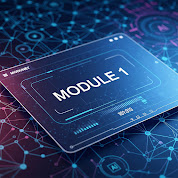MODULE 3
Module 3: Creating Effective Lesson Plans with AI and Design Thinking
Module
number three, titled "Creating Effective Lesson Plans with AI and Design
Thinking," was particularly exciting for me. My expectations were high
because the title suggested we would learn how to use AI to create and improve
lesson plans. This was of great interest to me, as lesson planning has been a
significant challenge since I was taking my teaching practice. I hoped that by
the end of this module, I would be able to improve my planning and teaching
skills, enabling me to deliver successful classes that meet my students' needs
and help them improve their English skills.
Module
three was short but extremely helpful. We started by learning about the National Curricula from the Ministry of Education, Science and Technology of El
Salvador (MINEDUCYT) and how to implement it. This was completely new
information for me, as I was only familiar with the methods I learned during my
teaching practice. I learned that working in a school is different depending on
the grade or level. For example, when creating a lesson for a public school,
it's necessary to follow a specific three-phase format: I Activate, I Practice, and I Produce. Each of these phases is
further divided into three sub-phases: Pre, During, and Post. Therefore, all
planning must adhere to this format. We applied this knowledge by creating our
own lesson plan using AI and following the MINEDUCYT format. This was a macro
lesson plan for second-year high school students, designed to cover Unit One
over five weeks. Each week consisted of five hours of class time, and the
lessons followed the three-phase format and its sub-phases. Personally, one of
the most significant things I learned is that AI is not meant to replace
teachers but to augment our skills and free up our time.
We
also learned how to create apps using Google AI Studio. I honestly did not
think we could do it since we have no prior knowledge of programming or coding.
However, we succeeded, and it was surprisingly easy. These types of apps are
beneficial because they can be used by both teachers and students as a space to
practice and improve their skills.
This
knowledge will undoubtedly help me in my future teaching career. I anticipate
spending less time on the administrative side of lesson planning and more time
on the truly meaningful aspects of teaching, such as providing personalized
feedback and fostering a dynamic classroom environment. The biggest challenge
was learning to formulate effective prompts. I realized that the quality of the
AI-generated output is directly proportional to the quality of the input I
provide. In conclusion, I feel incredibly empowered and optimistic about the
future of teaching now that I have this knowledge. I am also more confident in
my ability to create engaging and well-structured lesson plans that cater to
the diverse needs of my students. I am excited to put this knowledge into
practice and explore all the possibilities that AI offers in the field of
English language teaching.
Material created by me during module three
My group and I created a Macro Lesson Plan using Gemini. It was a complete lesson with all the instructions, materials, and tips for teachers. It was well structured and divided based on the phases and subphases for each week.My group and I created an app called "LinguaCraft" that was created with the intention that students have a space where they can practice their writing and listening skills. This app has different activities, so they can decide which to use.









Comments
Post a Comment